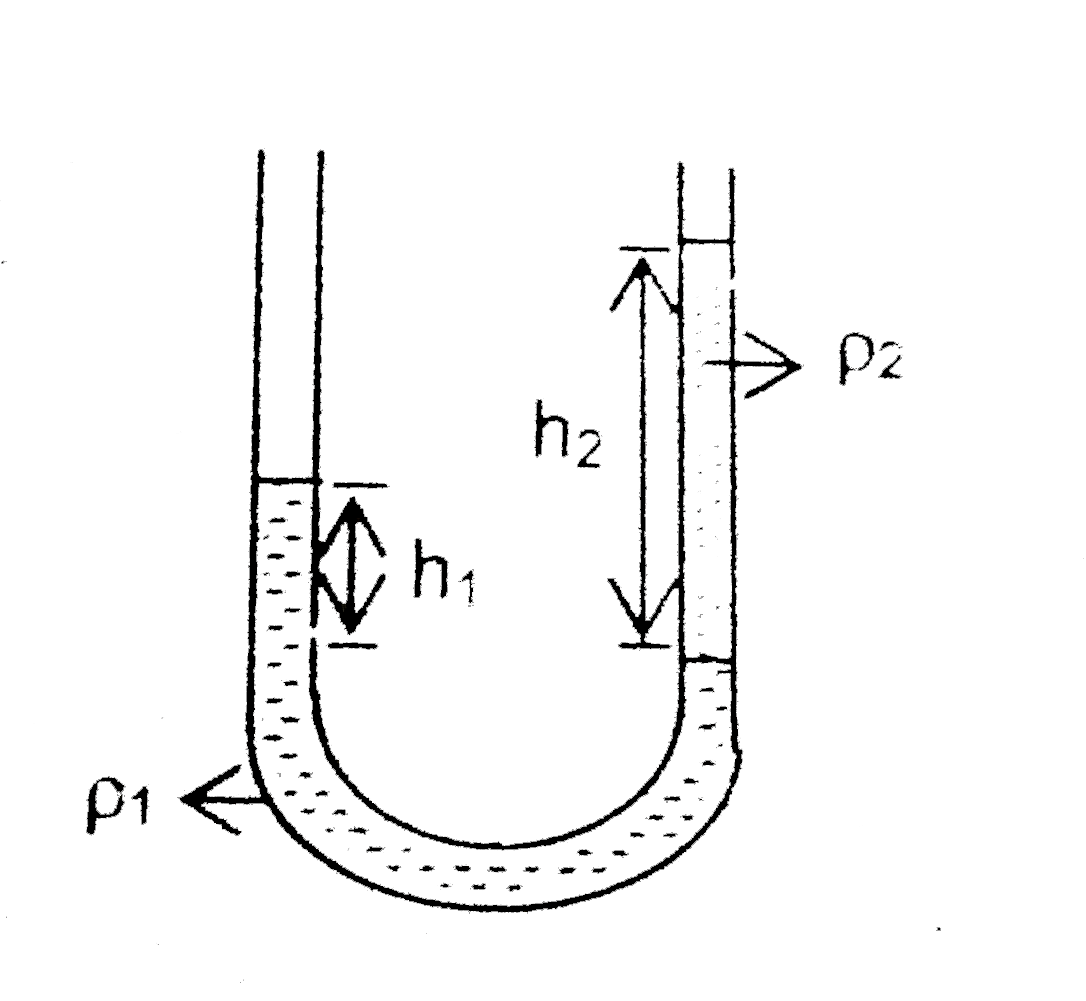
Two liquids which do not react chemically are placed in a bent tube as shown in figure. The height of the liquids above their surface of separation are
directly proportional to their densities
inversely proportional to their densities
directly proportional to square of their densities
inversely proportional to square of theire densities.
The correct Answer is:B
At the level of interface
Pleft=Pright
ρ1gh1=ρ2gh2
⇒ρ∝1h.
Topper's Solved these Questions
- BOOK - FIITJEECHAPTER - TEST PAPERSEXERCISE - PHYSICS747videos
TEST PAPERS
- BOOK - FIITJEECHAPTER - SIMPLE HARMONIC MOTIONEXERCISE - Assignment Problems (Objective) (Level-II)20videos
SIMPLE HARMONIC MOTION
- BOOK - FIITJEECHAPTER - WORK, ENERGY AND POWER EXERCISE - COMPREHENSIONS ( Comprehension-II)5videos
WORK, ENERGY AND POWER
Similar Questions
Two chemically non-reactive liquids are placed in a U-shaped tube as shown in the figure. The height of any liquid above a common reference line is
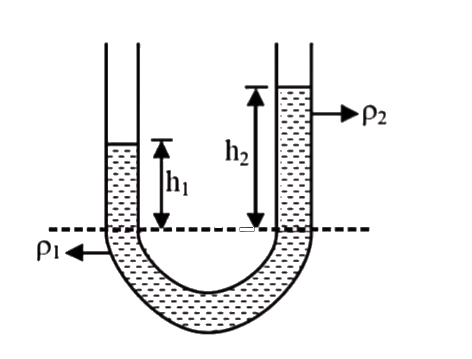 View Solution
View SolutionTwo liquid A & B having densities 2ρ and ρ respectively, are kept in a cylindrical container separated by a partition as shown in figure. The height of each liquid in the container is h and area of cross section of the container is A. Now the partition is removed. Calculate change in gravitational potential energy (ΔU) of the system (a) assuming that the two liquids mix uniformly. (b) Assuming that the two liquids are immiscible. What do you conclude from the sign of ΔU in the above two cases?
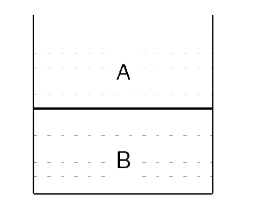 View Solution
View Solution
Knowledge Check
- Question 1 - Select One
A container filled with a liquid A is floating on the surface of another liquid 'B' as shown in the figure, then volume of the liquid displaced by the container
 Ais equal to the weight of the liquid A.Bis greater than the weight of the liquid A.Cis less than the weight of the liquid ADCannot be determined
Ais equal to the weight of the liquid A.Bis greater than the weight of the liquid A.Cis less than the weight of the liquid ADCannot be determined - Question 2 - Select One
A liquid of density ρ is filled in a U-tube is accelerated with an acceleration a so that the height of liquid in its two vertical arms are h1andh2 as shown in the figure. If l is the length of horizontal arm of the tube, the acceleration a is
 Ag(h1−h2)2l towards rightBg(h1−h2)2l towards leftCg(h1−h2)l towards rightDg(h1−h2)l towards left
Ag(h1−h2)2l towards rightBg(h1−h2)2l towards leftCg(h1−h2)l towards rightDg(h1−h2)l towards left - Question 3 - Select One
A cone of radius R and height H, is hanging inside a liquid of density ρ by means of a string as shown in figure. The force due to the liquid acting on the slant surface of the cone is
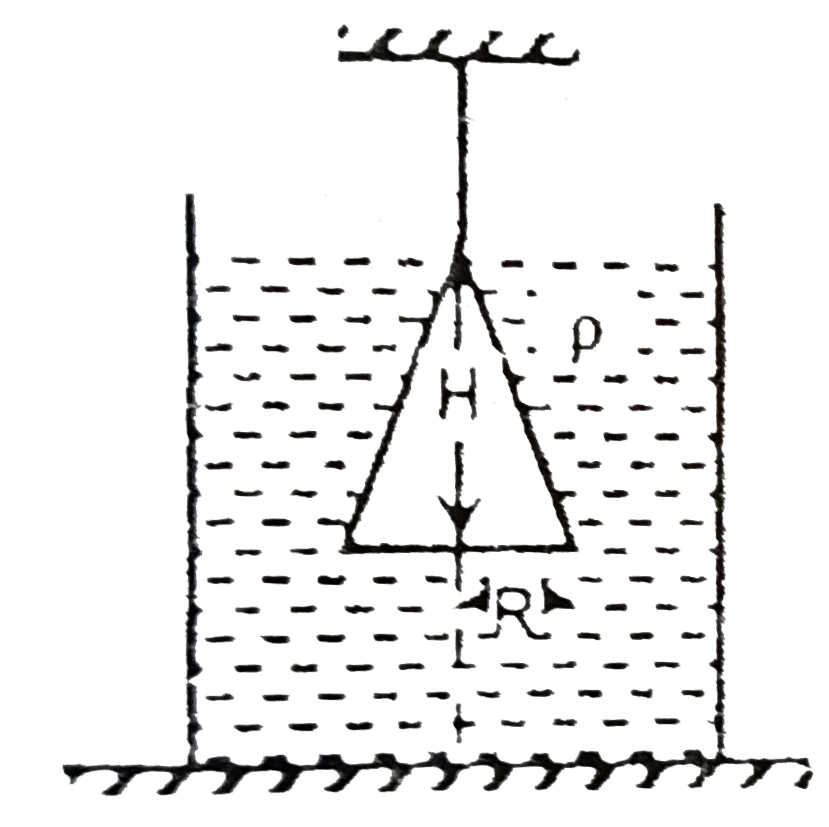 AρπgHR2BπρgHR2C43πρgHR2D23πρgHR2
AρπgHR2BπρgHR2C43πρgHR2D23πρgHR2
A man observes a coin placed at the bottom of a beaker which contains two immiscible liquids of refractive indices 1.2 and 1.4 as shown in the figure. Find the depth of the coin below the surface, as observed from above.
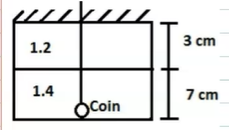 View Solution
View SolutionA closed tube in the form of an equilateral triangle of side l contains equal volumes of three liquids which do not mix and is placed vertically with its lowest side horizonta. Find 'x' in the figure if the densities of the liquids are in A.P.
 View Solution
View SolutionA vertical U-tube has two liquids 1 and 2. The heights of liquids columns in both the limbs are h and 2h, as shown in the figure. If the density of the liquid 1 is 2ρ.
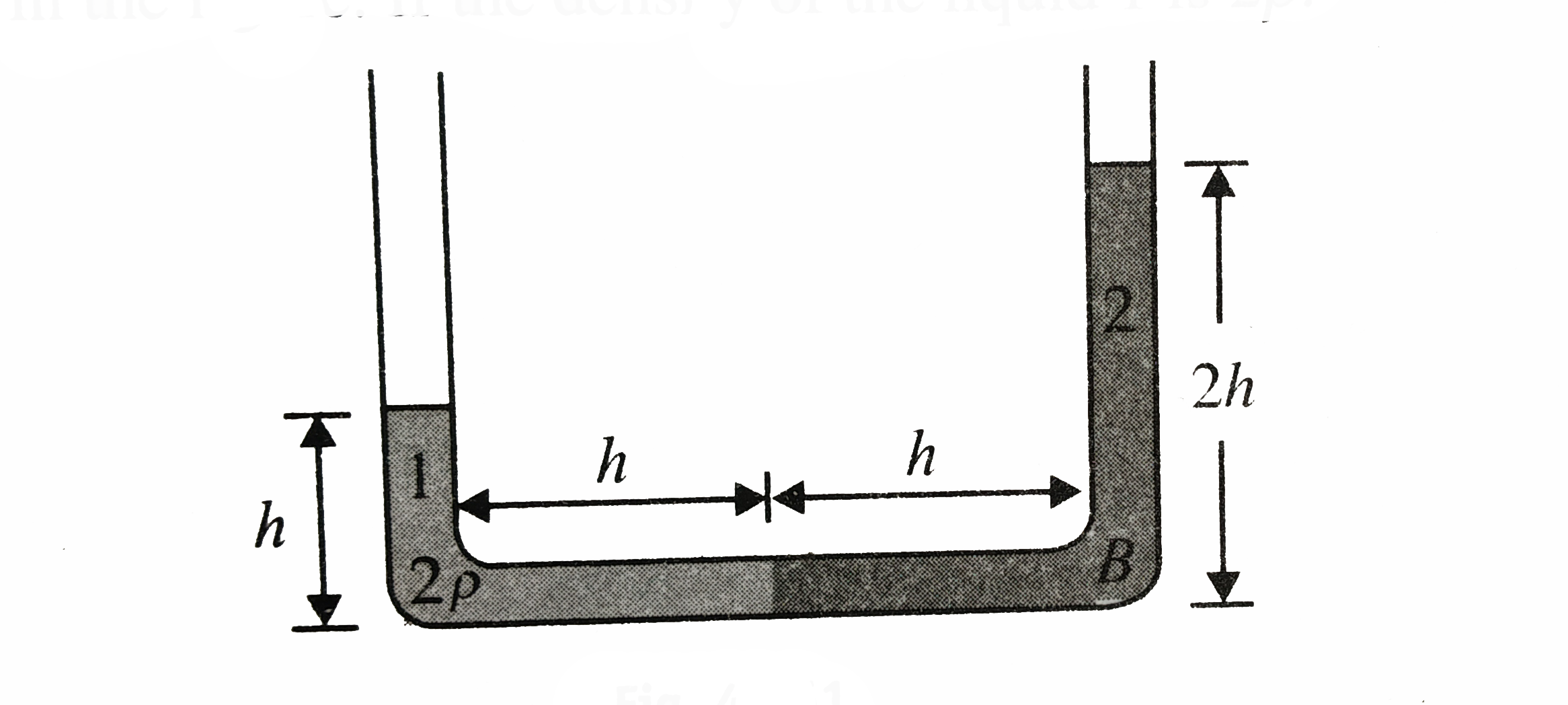
a. Find the density of liquid 2.
b. If we accelerate the tube towards right till the heights of liquid columns will be the same, find the acceleration of the tube.View Solution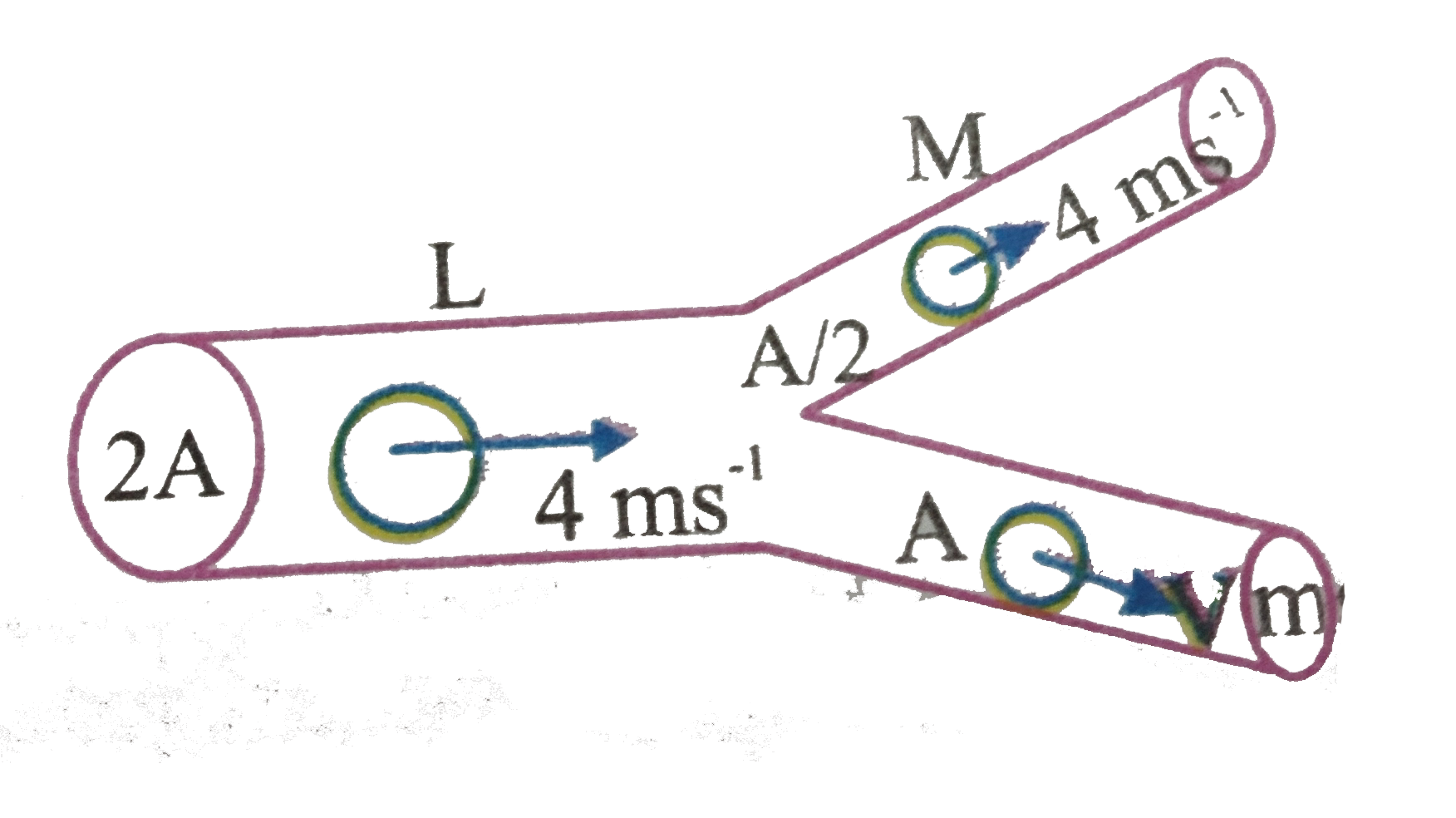
An incompressible liquid flows through a horizontal tube LMN as shown in the figure. Then the velocity V of the liquid throught he tube N is:View SolutionA liquid flows through a horizontal tube as shown in figure. The velocities of the liquid in the two sections, which have areas of cross-section A1 and A2 and v1 and v2 respectively. The difference in the levels of the liquid in the two vertical tubes is h, then
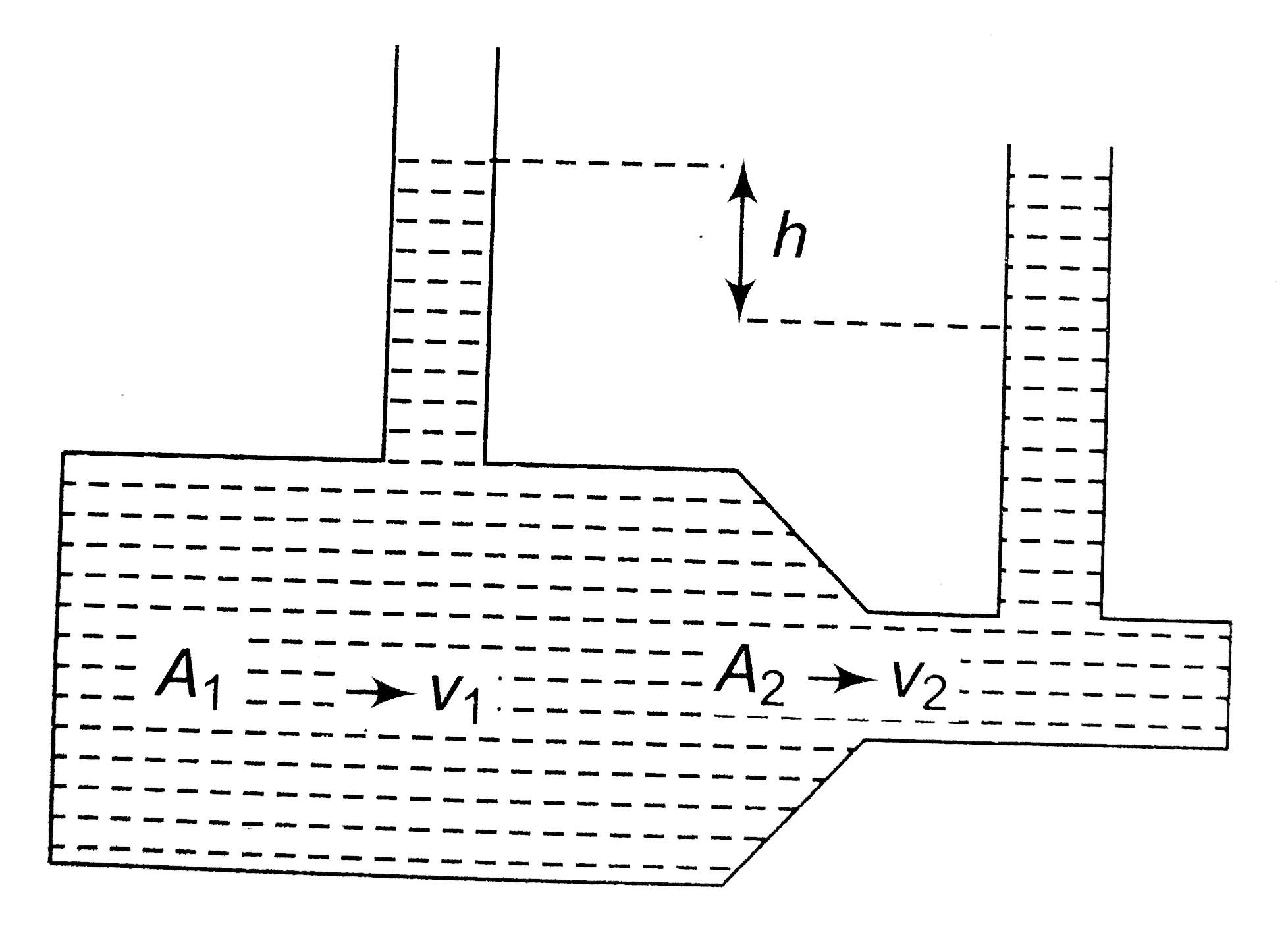 View Solution
View Solution

